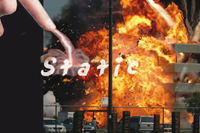Confined spaces are some of the most dangerous and potentially life-threatening work environments in industry, making ventilation,
respiratory and PPE equipment an integral component of a total safety program. U.S. OSHA states “electical equipment must be
approved by a Nationally Recognized Testing Laboratory (NRTL) “ . . . and stated in 29 CFR 1910.303(a). In addition, NRTL’s
must approve this equipment using U.S. recognized test standards, 29 CFR 1910.7.” Proper selection and training with
approved hazardous location safety equipment can reduce the cause of potential accidents and even loss of life. In order to select the
proper equipment, the worker must first determine whether the location is considered a “Hazardous” or “Non-Hazardous” location.
- What is a Hazardous Location?
All confined spaces should be considered a “Hazardous Location” until proven otherwise. Federal OSHA refers to the National Electrical
Code (NEC) as the “Bible” for reference information concerning hazardous locations. NEC defines a hazardous location as those areas
“where fire or explosion hazards may exist due to flammable gases or vapors, flammable liquids, combustible dust, or ignitable
fibers or flyings.”
- NEC classifies hazardous locations in three ways: Type, Condition, and Nature:
Type
Three “Types” of hazardous conditions exist called Classes, describing the type of hazard expected:
CLASS I (NEC-500-5) - Areas in which flammable gasses or vapors may be present in the air in sufficient quantities to be
explosive or ignitable.
CLASS II (NEC-500-6) - Areas made hazardous by the presence of combustible dust
CLASS III (NEC-500-7) - Areas in which easily ignitable fibers or flyings
present, due to the type of material being handled, stored, or processed
Condition
Two kinds of hazardous “Conditions” exist called Divisions:
DIVISION I (NEC-800-5, 6, 7) - The hazard is present continuously
DIVISION II (NEC-500-5, 6, 7) - The hazard is atypical - may occur
Nature
The “Nature” of the hazardous substance is called a Group (NEC-500-3).
Groups A, B, C, or D where Group A is most volatile (Acetylene) and Group D would be least flammable (Propane). All Class I locations, Flammable Gases and Vapors, fall into Groups A, B, C
or D.
Groups E, F, and G where Group E is conductive and explosive metal dust, Group F is carbon (coal) dust, and Group G is
flour and grain dust. All Class II locations, Combustible Dusts, fall under Groups E, F or G.
Not Grouped - Hazards consisting of textile and wood fibers. Class III locations, Ignitable Fibers for Flying, are not grouped.
 Ventilation Basics
Ventilation Basics